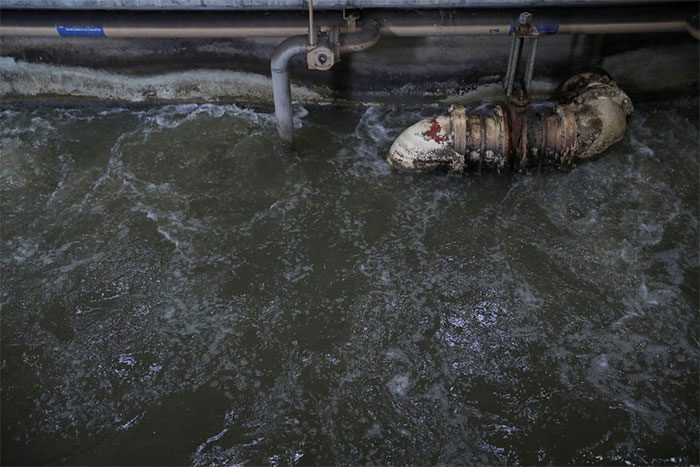Chinese scientists have discovered a method to extract useful chemicals from water contaminated with heavy metals for the sustainable and environmentally friendly production of valuable semiconductor materials.
According to the South China Morning Post, this research, led by Professor Gao Xiang at the Shenzhen Institute of Advanced Technology, Chinese Academy of Sciences, and Professor Lu Lu at Harbin Institute of Technology, was published in Nature Sustainability on October 16.

Genetically modified bacteria in wastewater can be used to produce semiconductors. (Illustrative image: Shutterstock).
Semiconductors – the fundamental chips that form the backbone of the high-tech industry – are typically produced using chemical or physical methods in ultra-clean environments. However, materials for semiconductor fabrication can be produced using genetically modified bacteria in wastewater, applicable in various fields such as the production of next-generation digital displays, solar panels, and even in medicine.
However, due to the diverse and complex composition of industrial wastewater, using it as a nutrient for bacteria has become a challenge. Additionally, limited production capacity has led to costs exceeding 100 times the price of gold. To find a more effective method, researchers are considering converting pollutants in wastewater into hybrid biological semiconductors, composed of both biological and non-biological components.
The research team selected Vibrio natriegens – a saltwater-friendly marine microorganism – to begin creating genetically modified bacteria. Professor Gao stated that Vibrio natriegens is one of the fastest-growing industrial bacteria, capable of doubling its growth rate compared to the commonly used E. coli.
“Vibrio natriegens can thrive in high-salinity environments and in wastewater. They can utilize over 200 types of organic materials as nutrients, including sugars, alcohols, amino acids, and organic acids, making them ideal candidates for this research,” he added.
The team then desulfurized Vibrio natriegens, “training” this strain to absorb sulfate directly from the environment and produce hydrogen sulfide, which is then combined with metal ions in wastewater to create semiconductor nanoparticles. This method has proven flexible and applicable to various metal ions, yielding compounds such as cadmium sulfide, lead sulfide, and mercury sulfide.

99% of cadmium ions extracted and converted into cadmium sulfide particles. (Image: Reuters).
The nanoparticles are then fixed onto the bacterial surface, forming biological semiconductor particles. When exposed to light, the semiconductor material absorbs solar energy and converts it into electrons, providing additional energy for the bacteria.
In experiments using hybrid biological materials to clean wastewater solutions, 99% of cadmium ions were extracted and converted into cadmium sulfide particles.
These nanoparticles – also known as quantum dots – earned another group of scientists the Nobel Prize in Chemistry this year.
“After a complete cycle, scientists can collect biological materials from wastewater through filtration or sedimentation to extract semiconductor materials. This biohybrid system can be an effective, cost-saving method for producing high-value quantum dots,” said Gao.
In addition to increasing biomass in wastewater, the biohybrid also converts organic pollutants into 2,3-butanediol (BDO), a valuable chemical widely used in cosmetics, agriculture, and healthcare.
“The additional energy produced by the nanoparticles through light absorption has improved the overall synthesis performance of the biohybrid and the rate of organic conversion in wastewater,” Gao noted.
Typically, all energy needed for bacterial growth and BDO production is provided by the bacteria themselves, including through their metabolic processes and organic matter digestion.
Experiments have shown that under artificial light, the bioengineered bacteria produce BDO twice as fast as non-genetically modified bacteria, with a 26% increase in carbon conversion rate.
In experiments conducted in reactors, hybrid strains have been successfully developed using actual industrial wastewater, achieving a BDO production rate of 13 grams per liter, surpassing previous studies.
The research team is also exploring other measures to scale up the reaction.
“Industrial wastewater often has poor clarity. We are researching reactors with larger surface areas to ensure enough light,” Gao stated, attributing the project’s success to careful experimental planning.



















































